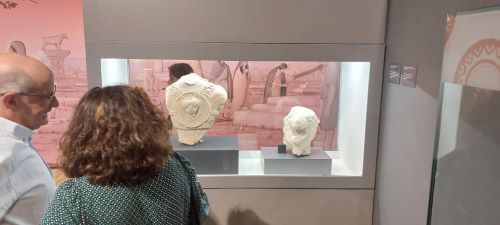.jpg)
The MAM, Archaeological Museum of Murcia, hosts several pieces from the MARQ in the temporary exhibition. Iberians and death: Iberian necropolises in the Murcia region which was inaugurated on 26 September last and can be visited until 26 January next.
The temporary exhibition installed in the Archaeological Museum of Murcia is devoted to the Iberian funerary world in Contestania, an area which at the time occupied a large part of the territory of Murcia, Alicante and southern Albacete.
Among the pieces that the MARQ, the Archaeological Museum of Alicante, dependent on the Alicante Provincial Council, has loaned for the MAM exhibition is the griffin sculpture, a mythical animal from the Iberian necropolis of Cabezo Lucero in Guardamar, while the Museum of La Alcudia in Elche has loaned the so-called torso of the warrior from the site of La Alcudia.
This area is particularly rich in the Region of Murcia as it has several of the most important necropolises known, such as Cabecico del Tesoro (Verdolay, Murcia), with 609 exhumed burials, El Cigarralejo (Mula) with 547 documented cremations and possibly the best known and published Iberian necropolis, or Coimbra del Barranco Ancho (Jumilla), with 277 catalogued tombs. Los Nietos (Cartagena), Castillejo de los Baños (Fortuna), Cabezo del Tío Pío (Archena), Archivel (Caravaca de la Cruz) and the town centre of Lorca complete the list.
This means an exhaustive knowledge of the Iberian funerary ritual in Murcia, being one of the best known in Spain, supported by excellent fieldwork and countless scientific publications, such as those developed by researchers of the stature of Gratiniano Nieto, Emeterio Cuadrado, Ana María Muñoz, José Miguel García Cano and Virginia Page.
Among the most outstanding pieces we can see the Coimbra riders from the Wide Ravinefrom Jumilla, one of the masterpieces of Iberian sculpture on a national scale, and the centaur of Los Royosfrom Caravaca de la Cruz, an archaic Greek bronze that is being exhibited for the first time in Murcia.

